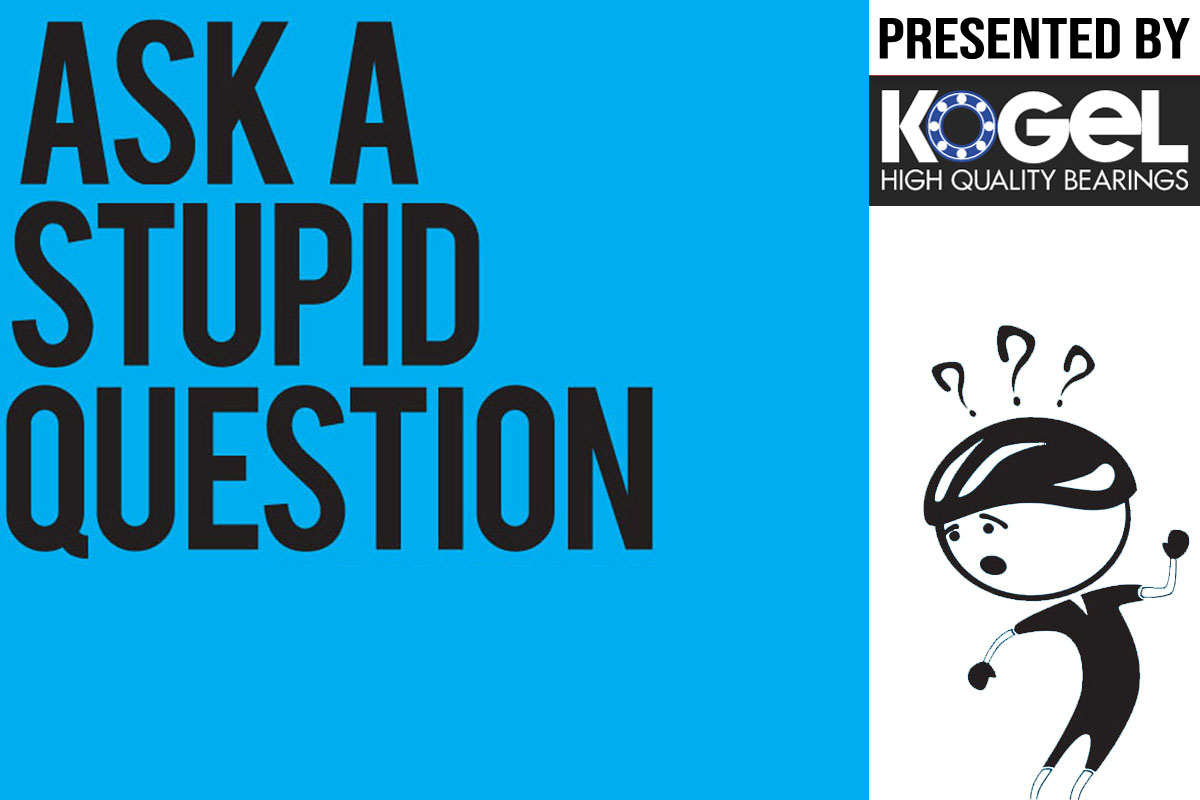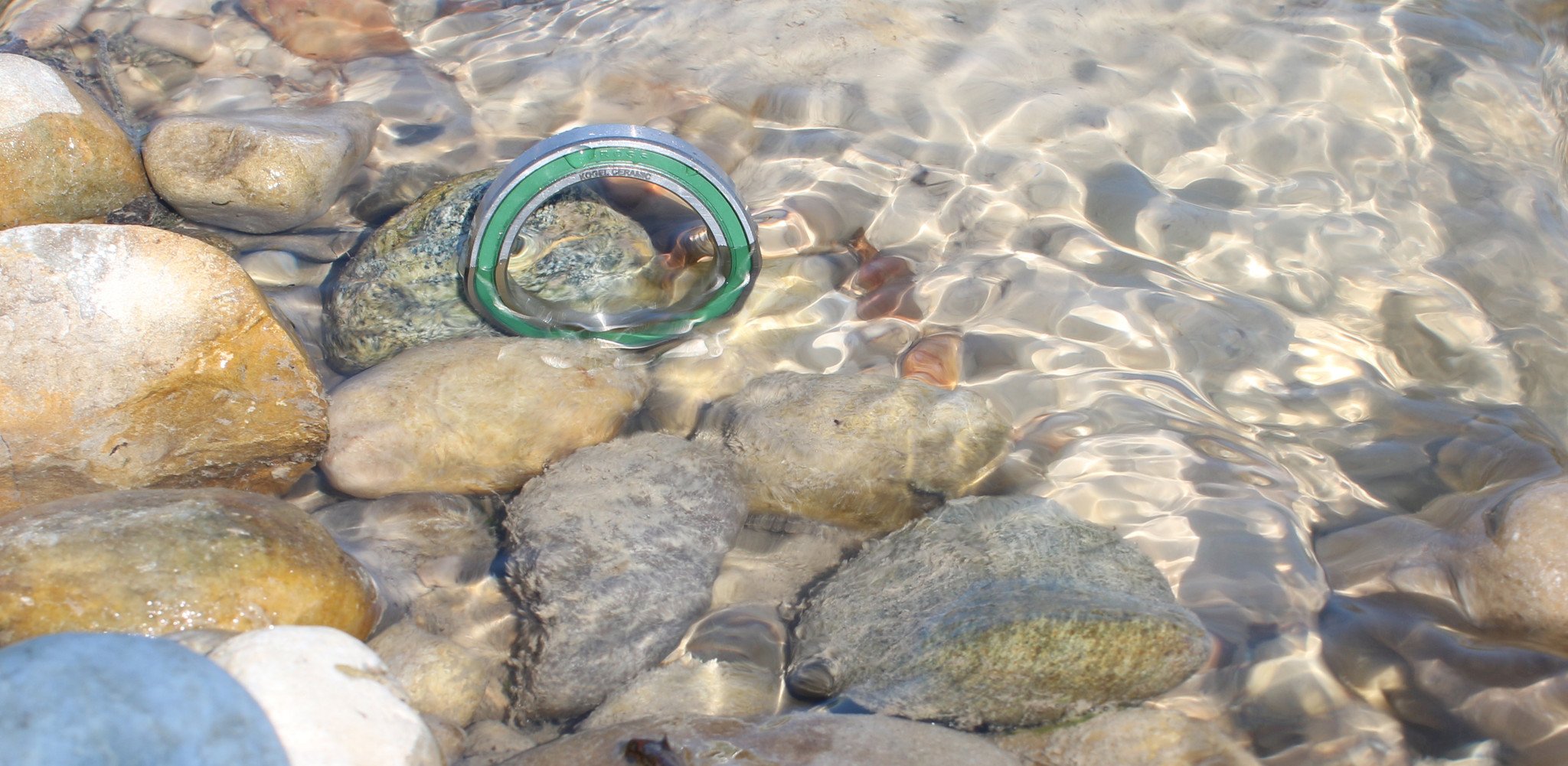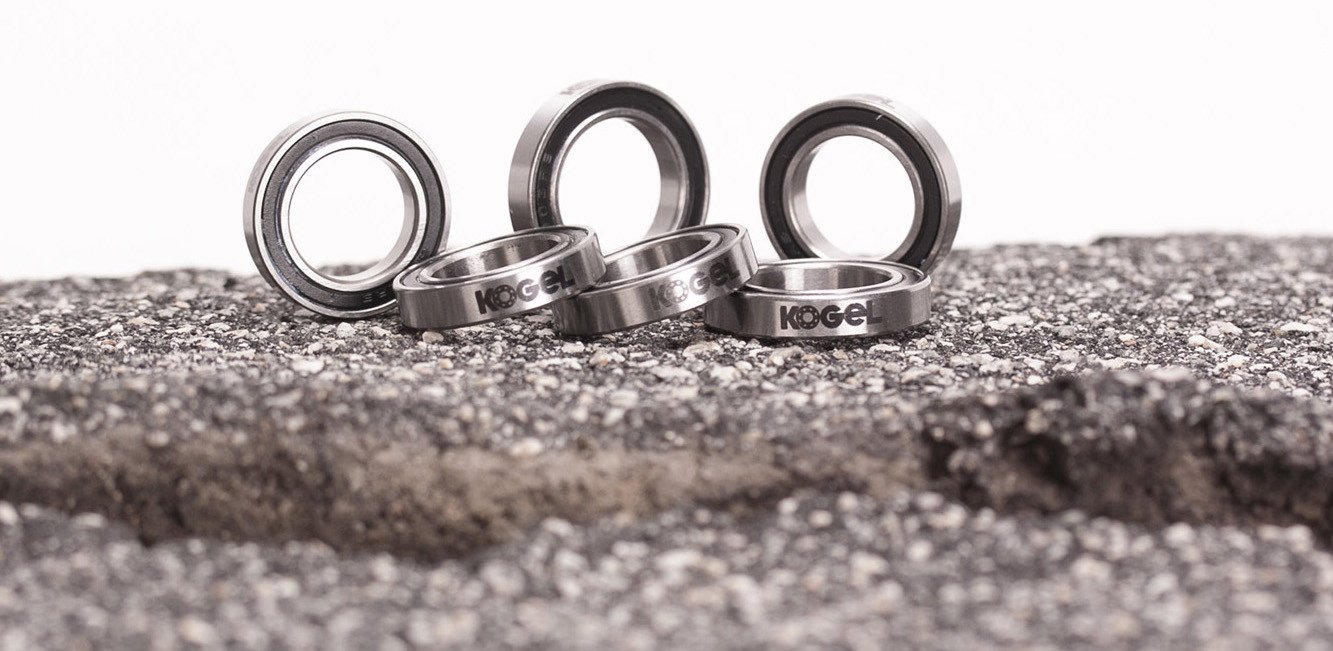We know, there’s no such thing as a stupid question. But there are some questions you might not want to ask your local shop or riding buddies. AASQ is our weekly series where we get to the bottom of your questions – serious or otherwise. Hit the link at the bottom of the post to submit your own question!
In Part One of our last AASQ installment, Kogel Bearings focused on questions regarding the functionality and durability of their ceramic bearings. This week, we’re back for the second part which is going to focus on bearing maintenance and questions regarding the various types of bearings.
Maintenance
I’m running Kogel’s narrow-wide pulleys on various bikes. It’s always been my practice to lube pulley bearings after routine post-ride bike cleaning. I tend to use Tri-Flo, dripping a bit into the bearings through the gap in the bearing covers. This is after having coated the bearings with marine grease during installation. My thinking is that I’ll displace any trapped water with the Tri-Flo. So the question is: is my practice pointless, or even counter-productive? – Matt
Kogel: Kogel Bearings rely mostly on the bearing seals for protection. The labyrinth construction of the pulley covers is a little extra insurance policy. While I do not expect for the Tri-Flo to do any damage, I would expect it to add friction and maybe create a black greasy mess between the cover and the outside of the bearing. Save the time and inspect the bearings every two months or so to see if they have been contaminated.
Should I lubricate my Kogel ceramic derailleur pulleys? If so, with what? – Aaron
For bearings, what grease should I use? Why (not) use oil and do the same lubricant principles apply for ceramic bearings? – Jan-Frederik
Kogel: Kogel low friction grease builds a nice balance between low friction and durability. Oil works better for low friction if you are the person that is meticulous about checking and servicing bearings.
How come millions of pressfit / cartridge bearings are used / installed in non-cycling applications all over the world and companies like Kogel and Shimano and all other bottom bracket manufacturers can properly press a cartridge bearings into a properly sized housing consistently, but so many bike frame manufacturers and IBD mechanics seem to find it to be a nearly insurmountable obstacle to either get the BB shell tolerances or the installation correct? – Jim
Kogel: This is not specifically a bearing or bottom bracket question, but we have studied a few bottom bracket shells in our lifetime. Let’s see if we can come up with a reasonable answer.
Most metal parts can be machined to ridiculously tight tolerances. We use 1/50 of a mm on our bottom bracket cups for press surfaces. Think of the process: start with a solid block of material and grind it down until it is right. Not right yet: cut a bit more.
Now think of the process of making a bottom bracket shell in a carbon frame: start with a tube that is not part of the frame. Wrap mats of carbon fiber around it until it is right. Then the whole thing needs to go in the oven and only at the end of the process you can measure. Any machining after the fact has to be done on a complete frame or at least a BB shell cluster, which is awkward to handle. Personally, I am impressed that carbon frame manufacturers can get within 0.2mm of the goal. But then again, I am not a carbon frame manufacturer.
With the very large part (>90%?) of a std bearing friction coming from the seals and the grease, is there any magic that can give less friction without a ridiculously low protection in a place as exposed as a BB or pulleys? – Jordi
Kogel: The search for the holy grail of ball bearings is still on. Until we find it, the rough guidelines are grease causes more friction than oil but offers better protection. Same applies to low friction vs best protection seals.
What are the downsides of running bearings completely dry? They feel smooth in the hand. – Darcy
Kogel: The downside is reduced lifespan. For a short effort on a velodrome I see no problems in running a dry bearing. A few worn out bearings are a small price to pay once you look at that rainbow jersey, framed and hanging in your living room.
Different bearing types
What’s the real story of radial vs angular bearings? Is one better suited for one use and the other for something else or is one better overall? – Michael
For bottom brackets: any real-world difference between angular contact and radial bearings (performance and durability)? – Mark
Kogel: I am not a fan of angular contact bearings for bicycles. They leave too much responsibility in the hands of the end user. In theory they work better than radial bearings, but only if adjusted to perfection. Too little or too much preload? They are going to be draggy or have play and definitely wear out prematurely. Preload set perfectly at the shop, but the user did not bother checking the settings for a few months: the bearings might have readjusted themselves and run suboptimal.
Are your pulley wheels floating or fixed, and what are the pros/cons of either? – Mark
Kogel: Our pulley wheels run on radial bearings, the same as our wheels and bottom brackets. We set them up with a tiny bit of play to achieve low rolling resistance and to mimic the float found on some Shimano pulleys. The float is mostly there to compensate for a slightly maladjusted derailleur.
What are the pros/cons of fewer but bigger versus more but smaller bearing balls? – Visa
Kogel: Typically, the ball size is defined by the bearing size. Within a given bearing width, inner and outer diameter there is very little room for changing ball sizes. The challenge is usually that the races will get too thin or unnecessarily thick. If there are options, I would lean towards using larger balls for better durability.
Cones seem to be made of a softer metal to wear out first in cup & cone bearings. How hard are the cup and balls in relation to the cones? Better hubs also seem to have harder cones. How does it affect the longevity of the cups, or are they also harder than in cheaper hubs? – Visa
How much can a cup & cone bearing wear without getting pitted? – Visa
Kogel: These questions touch the exact reason why Kogel has never offered loose bearing balls. Given that we don’t know which hubs the balls will be installed on, we don’t know how hard the races are. We are left to guess if they can handle the additional load caused by perfectly round balls that do not deform under load.
Once a cup and cone system is damaged, in most cases that would mean the end of a hub or wheel set. At this point we prefer to not get involved in that risky situation.
Miss Part One? Check it out for more info on the functionality and durability of ceramic bearings.
Got a question of your own? Click here to use the AASQ form and submit your own question!



